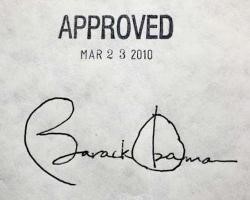Affordable Care Act Future Uncertain
Now that we will have Donald Trump as president and the GOP retaining control of Congress, all bets

are off on the future of the Affordable Care Act. It’s likely that Trump will hand over the health insurance reform portfolio to Speaker Paul Ryan, who along with the House leadership in July published a blueprint for how they would like to repeal and replace the ACA. Trump assailed the ACA during the campaign, saying he would abolish it. But that may be easier said than done as Democrats in the Senate would certainly mount filibusters to keep some legislation from passing the upper house. And it could turn out to be extremely unpopular now that 20 million more Americans have health coverage than before the law was enacted. There’s a chance that Trump and congressional Republicans will push to end the individual and employer mandates, eliminate ACA insurance reforms such as minimum essential benefit packages, and pare back and restructure the premium subsidies. But those moves would send tremors through the market, unraveling the ACA system and could lead to millions of people losing coverage. This is what we know about the president-elect’s plans for America’s health care. He has proposed: • Getting rid of the employer mandate. • Eliminating public health insurance exchanges. • Setting up free health savings accounts for people with high-deductible insurance plans. • Setting up state-based high-risk pools for people with medical conditions that make it hard to get coverage on their own. • Allowing insurers to sell coverage across state lines to “boost competition and drive down prices.” • Eliminating the “Cadillac” tax on high-priced health plans. The House Plan The House plan includes the following: • Expanding the use of health savings accounts linked to high-deductible health plans, so that patients can direct their treatment and “shop around” for the best deal for procedures. • Supporting coverage portability, whereby individuals would purchase a health care plan that they can take with them from job to job. The plan would include a universal, advanceable and refundable tax credit for individuals and families. • Only allowing employees to pay for their premiums on a pre-tax basis up to a certain level (meaning that above a certain premium level, they would have to pay for the premium using income that’s already been taxed). • Allowing small businesses to pool together to buy health insurance, in order to garner economies of scale – and thus less expensive coverage. • Allowing consumers to buy insurance across state lines. • Preserving employee wellness programs. • To tackle costs, the plan includes reforming medical liability laws to reduce large awards for medical malpractice. The unknown The big question mark is how far the appetite will go for an outright appeal of the ACA, as it would be a major market disruption, particularly for the millions of people who now have coverage through their jobs or health insurance exchanges. Just eliminating exchanges would leave a huge hole in the market and something viable would have to replace it. Any attempts to repeal the ACA will also be met with stiff resistance from Democrats, who could mount a filibuster to keep legislation from advancing. The best strategy for our clients now is to stay the course and continuing complying with the law. No changes will be immediate and we will keep you informed of changes here as they occur.
Need More Info or Want To Learn More About Our MEC Solutions?
[button color=”#COLOR_CODE” background=”#COLOR_CODE” size=”Medium” src=”https://www.www.loomisco.com/newsletter_submit_form/”]Contact Us[/button]
New Law Tightens Workers’ Comp Exclusion for Officers, Board Members
A new law has made changes to the officer exclusion for workers’ compensation in California.

Starting in 2017, an officer can be only excluded from workers’ comp coverage if he or she owns 15% or more of the company’s stock. That’s changed from the current rules that set no ownership levels for officers and directors that want to claim a workers’ comp exclusion, which has created confusion as well as an opportunity for fraud. Current law To be eligible for a workers’ comp exclusion: • The employee must be an executive officer of the corporation (president, vice president, secretary, assistant secretary, treasurer, assistant treasurer, for example). • The employee must own some stock in the corporation. • The company must be a “closed corporation.” That means that all of the company stock must be owned by the executive officers and directors, and no one else. The election process to opt out of coverage is not very clear under current law. Beyond one limited statutory reference and very little regulatory guidance, insurers and LLCs are left to figure it out for themselves. The Association of California Insurance Companies, one of the supporters of the bill – AB 2883 – argues that this lack of clarity has led to abuses that have hurt injured workers and driven fraudulent activity. There have been cases of some companies making a janitor the “vice president of janitorial services” in order to avoid paying for their workers’ comp coverage. What’s new for 2017 AB 2883 requires: • That an officer or member of the board of directors own at least 15% of the stock of the corporation in order to opt out of workers’ compensation coverage. • That the officer or member of the board of directors sign a waiver stating that the individual is a qualifying officer or member. • That a general partner of a partnership or a managing member of a LLC execute a waiver to opt out of workers’ compensation coverage. • That with this 15% ownership requirement, there can never be more than six people excluded. • That the waiver will remain in effect until a written withdrawal is received by the insurance company, and waivers are not transferable to a new insurance company. • That grantors of revocable trusts are no longer deemed to be shareholders and will not qualify for exclusion.
Want Further Clarification or Guidance?
[button color=”#COLOR_CODE” background=”#COLOR_CODE” size=”Medium” src=”https://www.www.loomisco.com/newsletter_submit_form/”]Contact Us[/button]
Protective Safeguards Endorsement: How to Avoid Having Your Business Property Damage Claim Denied
Whether you own and insure your office or other business property, or insure the office or building you

rent, you will obviously want to make sure that you have an automatic sprinkler system or some other fire detection or suppression system in place in case of fire. You’ll also want to make sure that your fire alarms are working and that you have service contracts for periodic inspections of your facilities to identify fire and other risks. But what happens if there’s a fire in your building and your sprinkler system fails? Well, when you make your insurance claim you could be in for a nasty surprise if your policy has a “protective safeguards endorsement.” This endorsement would deny coverage if you had failed to maintain and ensure that your system is in proper working order. If your policy contains a protective safeguards endorsement, and you fail to adequately maintain any of the protective safeguards at your commercial building or manufacturing facilities and you suffer a loss caused by fire, coverage for the fire loss can be denied by your insurance company. Also, if you knowingly turn off or suspend any of the safeguards, even if it is for routine maintenance, and fail to notify the insurance company of the suspension, and a loss occurs during the suspension, coverage can be denied. Because of the potential coverage gaps that can be created by this endorsement, it’s very important for you to know whether it’s attached to your policy – and if it can be removed. If it can’t be removed, you need to understand your responsibilities in order to avoid having your claim rejected. These are types of protective safeguards that could be in the endorsement: • Automatic sprinkler system • Automatic fire alarm • Security service • Service contract • Automatic commercial cooking exhaust and extinguishing system • Any other protective system described in the endorsement schedule Protective Safeguard Horror Stories*Burmac Metal Finishing Co. – An Illinois appellate court ruled that an insurer was justified in denying coverage for a fire and explosion because Burmac had capped between three and 19 automatic sprinkler systems out of 600 at its industrial building without notifying the insurer. The court ruled that this action constituted failure to maintain the system, justifying denial of coverage. Y2K Textile, Inc. – A California appeals court ruled that an insurer had properly denied coverage for fire loss when the protective safeguards endorsement required the insured to maintain a contract with a duct-cleaning service and the insured never obtained a copy of such a contract. * Source: Faegre Baker Daniels blog Insurers will often offer a premium discount or a credit, or an otherwise uninsurable property may qualify for coverage, if the property policy includes a protective safeguards endorsement. Typically, a policy will identify the protective safeguards the endorsement covers and then it will have the following key clause: “As a condition of this insurance, you [the insured] are required to maintain the protective devices or services listed in [this endorsement].” The endorsement will spell out that the insurer will not pay for the loss or damage that is caused by or resulting from a fire if, prior to the fire, the policyholder: • Was aware that any of the protective safeguards had been suspended or were impaired prior to the fire, and that the policyholder had failed to inform the insurer. • Failed to maintain the protective safeguards in complete working order. That means that you have two duties under such an endorsement: • The duty to notify the insurer of any suspensions or impairments of any safeguards. • The duty to maintain the safeguards. Policies will also include instructions for when you must inform your insurer of a suspension of a safeguard. Most endorsements will include the following safe harbor provision: “If part of an Automatic Sprinkler System is shut off due to breakage, leakage, freezing conditions or opening of sprinkler heads, notification to us will not be necessary if you can restore full protection within 48 hours.”What you should do If you have an insurance policy for your property, and you are unsure whether it includes a protective safeguards endorsement, you can call us. If your policy does include it, we can also work with you and the insurer to see if can be removed, if you’re so inclined.